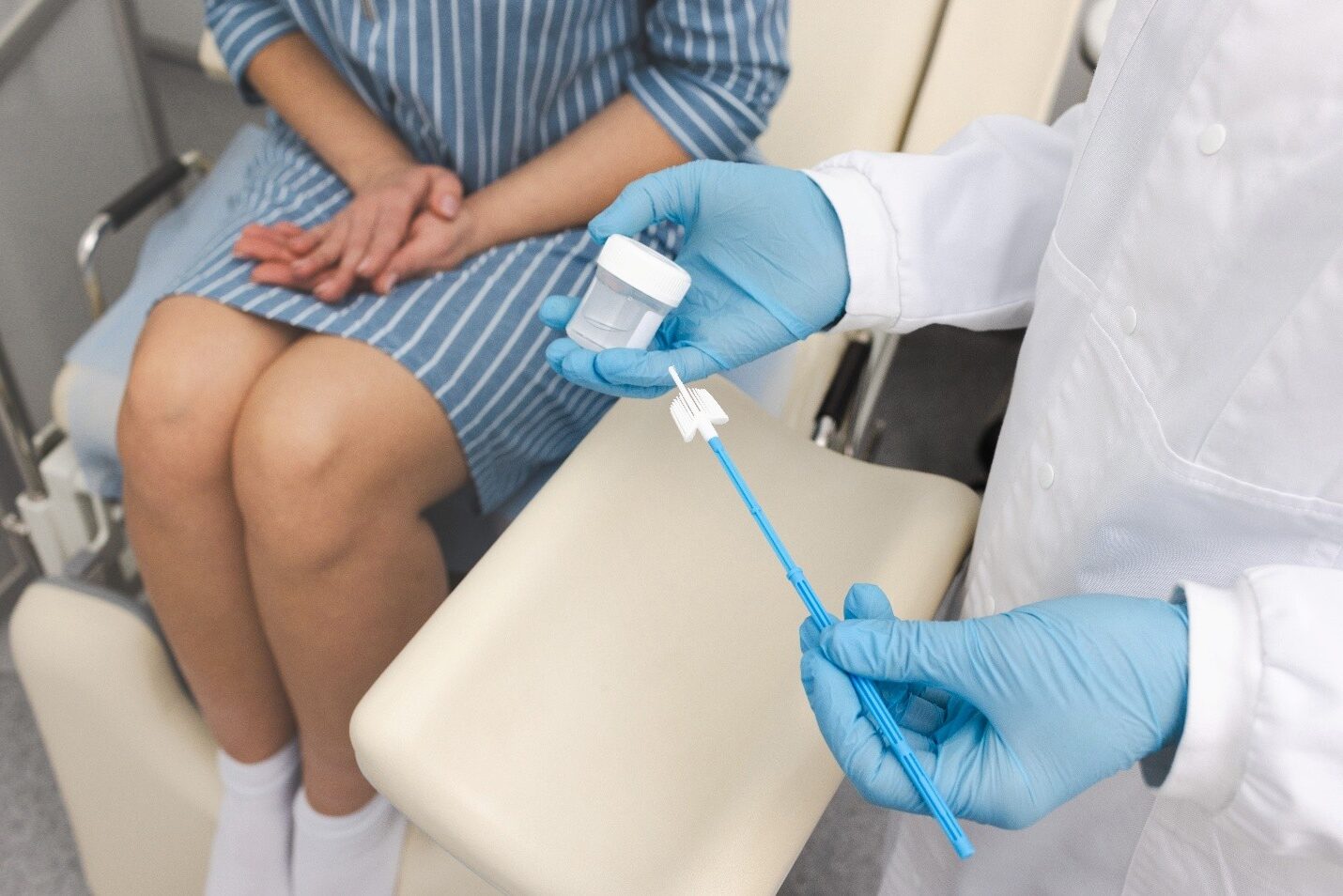What is cervical dysplasia?
Cervical dysplasia is when there are abnormal, or precancerous, cells in and around a woman’s cervix. The vagina opens up into the cervix, which is the lower part of the uterus.
Cervical dysplasia is detected by a pap test (pap smear). It’s diagnosed with a biopsy. Abnormal changes in cells can be mild, moderate, or severe. The presence of abnormal cells doesn’t mean you have cervical cancer. But the cells could lead to cancer if they aren’t treated.
Symptoms of cervical dysplasia
People with cervical dysplasia don’t usually have symptoms. This is why it’s important to get screened regularly. The American Academy of Family Physicians (AAFP) recommends routine pap tests to diagnose cervical cancer early. You can check AAFP’s clinical guidelines (at the end of this article) to see when and how often you should be tested.
What causes cervical dysplasia?
The cells on your cervix can change over time. This means that you can develop cervical dysplasia at almost any age.
HPV is the primary cause of cervical dysplasia. There are more than 200 different HPV viruses. About 40 of these affect the genitals. The viruses are spread through sexual contact. Most viruses are low risk for cancer. About 12 are high risk. High-risk HPV types 16 and 18 cause about 70 percent of cervical cancer cases.
In the United States, HPV is the most common sexually transmitted infection.
There are several factors that can increase your risk of cervical dysplasia:
- Becoming sexually active before age 18
- Having a high number of sexual partners
- Having illnesses or using medicines that lower your immune system
- Smoking or chewing tobacco
- Not using condoms (while condoms help prevent HPV, they don’t fully protect you)
- Giving birth before age 16
- Not getting the HPV vaccine
How is cervical dysplasia diagnosed?
Cervical dysplasia is typically detected during a routine pap test. For this test, your doctor swabs your cervix to collect a sample of cells. This is generally not painful. The cells are then sent to a lab. It can take up to 3 weeks for the lab to process the test.
The pap test results can be normal, inconclusive, or abnormal. If normal, you should follow AAFP’s recommendation for regular pap tests.
Inconclusive results don’t indicate cervical dysplasia. You could have a simple infection in your cervix or vagina. Your doctor may order a repeat pap test. Further action or diagnoses will depend on your age and medical history.
An abnormal result is known as cervical dysplasia. It’s called a squamous intraepithelial lesion (SIL). On the pap test, the precancerous cells may be classified as:
- Low-grade SIL (LSIL), indicating mild abnormality
- High-grade SIL (HSIL), indicating moderate to severe abnormality
- Atypical glandular or squamous cells (ASCUS)
Additional testing is needed to see if the cell changes are mild, moderate, or severe. A colposcopy is an in-office procedure that gives your doctor a closer look at your cervix. He or she may take a biopsy of the cervix to help identify the abnormal area. These biopsies are small and don’t cause much discomfort.
Cervical dysplasia that is found on a biopsy is called cervical intraepithelial neoplasia (CIN). There are 3 levels:
- CIN I (mild dysplasia)
- CIN II (moderate to marked dysplasia)
- CIN III (severe dysplasia to carcinoma in situ)
An HPV test can be completed at the same time or separately as the pap test. It will identify the presence and type of HPV.
Can cervical dysplasia be prevented or avoided?
The best way to prevent cervical dysplasia is to get the HPV vaccine. It’s proven to lower your risk of HPV. It doesn’t fully prevent cervical dysplasia. Consult your doctor to know if you meet all criteria for the vaccine. For best results, girls and boys between the ages of 9 and 26 should get vaccinated before becoming sexually active. However, vaccination can be helpful after onset of sexual activity and up to age 45. Consult your doctor to discuss the vaccine criteria and if you should be vaccinated.
You can also take the following steps to reduce your risk of developing cervical dysplasia:
- Get the HPV vaccine if you’re between the ages of 9 and 26.
- Don’t smoke.
- Delay the onset of sexual activity as long as possible or until you are in a long-term relationship.
- Use a condom whenever you have sex.
- Have as few sexual partners as possible.
Cervical dysplasia treatment
Treatment for cervical dysplasia will depend on the degree of abnormal cells and your medical history. Most mild cases will clear up without treatment. Your doctor may suggest getting a pap test every 6 to 12 months, instead of every 3 to 5 years. But if the changes don’t go away or get worse, treatment will be needed.
Instances of moderate or severe cervical dysplasia could require immediate treatment. Options include:
- Cryosurgery to freeze off the abnormal cervical tissue
- LEEP (loop electrosurgical excision procedure) to burn off the abnormal cells with an electric looped wire
- Surgery to remove the abnormal cells with a laser, scalpel, or both
Rare cases of severe cervical dysplasia could require a hysterectomy to fully remove the cervix.
Living with cervical dysplasia
Early diagnosis and prompt treatment cures most cases of cervical dysplasia. Follow your doctor’s and AAFP’s screening recommendations for early detection.
Once treated, cervical dysplasia can return. People who have severe cervical dysplasia, high-risk HPV, or whose condition goes untreated could develop cervical cancer.
Questions to ask your doctor
- Can I get the HPV vaccine?
- How can I prevent cervical dysplasia?
- Does cervical dysplasia or HPV affect my chances of getting pregnant?
- Is there an HPV test for men?
- If my partner tested positive for HPV, can he or she give it to me? What about same-sex partners?
ADVERTISEMENT
ADVERTISEMENT




